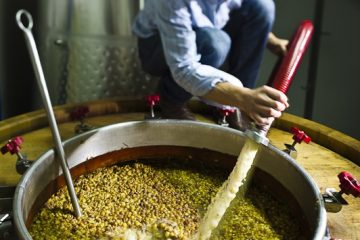Half way into the lunch, Giuseppe Palmieri is doing the unimaginable. He has brought three bottles to the table — a German Riesling, a French Chenin and an Italian Malvasia. “You see-this wine is too young, this one is too ‘hard’ and this one is too aromatic,” Palmieri says before
Amidst the discussion among wine writers on just how much “natural wines” should be included in wine lists, I am flipping through a 50-page wine list in one of Siena, Italy’s more renowned osterias. “So, anything interesting in there?” my Significant Other wonders, me being lost among wines of Italy’s
My late grandfather spent the last decade of his life solving crosswords and drinking wine. It’s been 15 years since he was with us. But I can still vividly recall his passion for both words and a bicchiere of dark-read more-
In June 2005 I joined a mixed group—Croatian winemakers, restaurateurs, professors, and journalists—to sail the Adriatic from the Istrian peninsula of Croatia to the Greek locality of Monemvasia, off the eastern coast of the Peloponnese. We boarded two 65-foot yachts-read more-
“My glasses hate water,” said Georg Riedel, as he opened a mid-May spirits and wine tasting in Ljubljana, Slovenia’s capital. Riedel, head of the Kufstein, the Austria-based glass company that holds cult status among wine geeks and mainstream consumers alike,-read more-
At almost two meters in height, with broad shoulders and sturdy hands, Paolo Vodopivec looks well adapted to work the land that is Carso. When I drove through this northeastern Italian region a year ago, I felt tremendous respect for-read more-
Unusually low temperatures—as low as –20º C in mid-December—sent shivers down many Croatians’ spines. But the snow and frost that have covered vineyards in the northern and eastern parts of the country made conditions right for yet another excellent sweet-read more-

